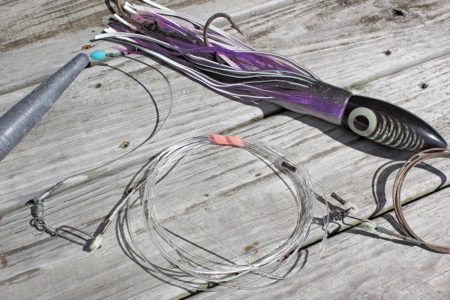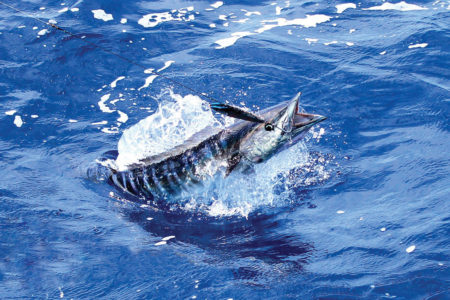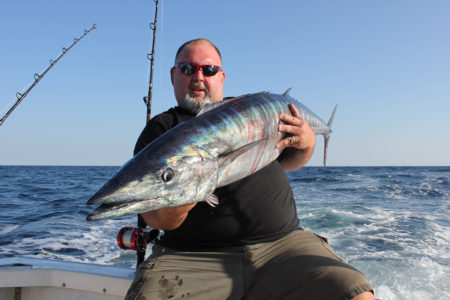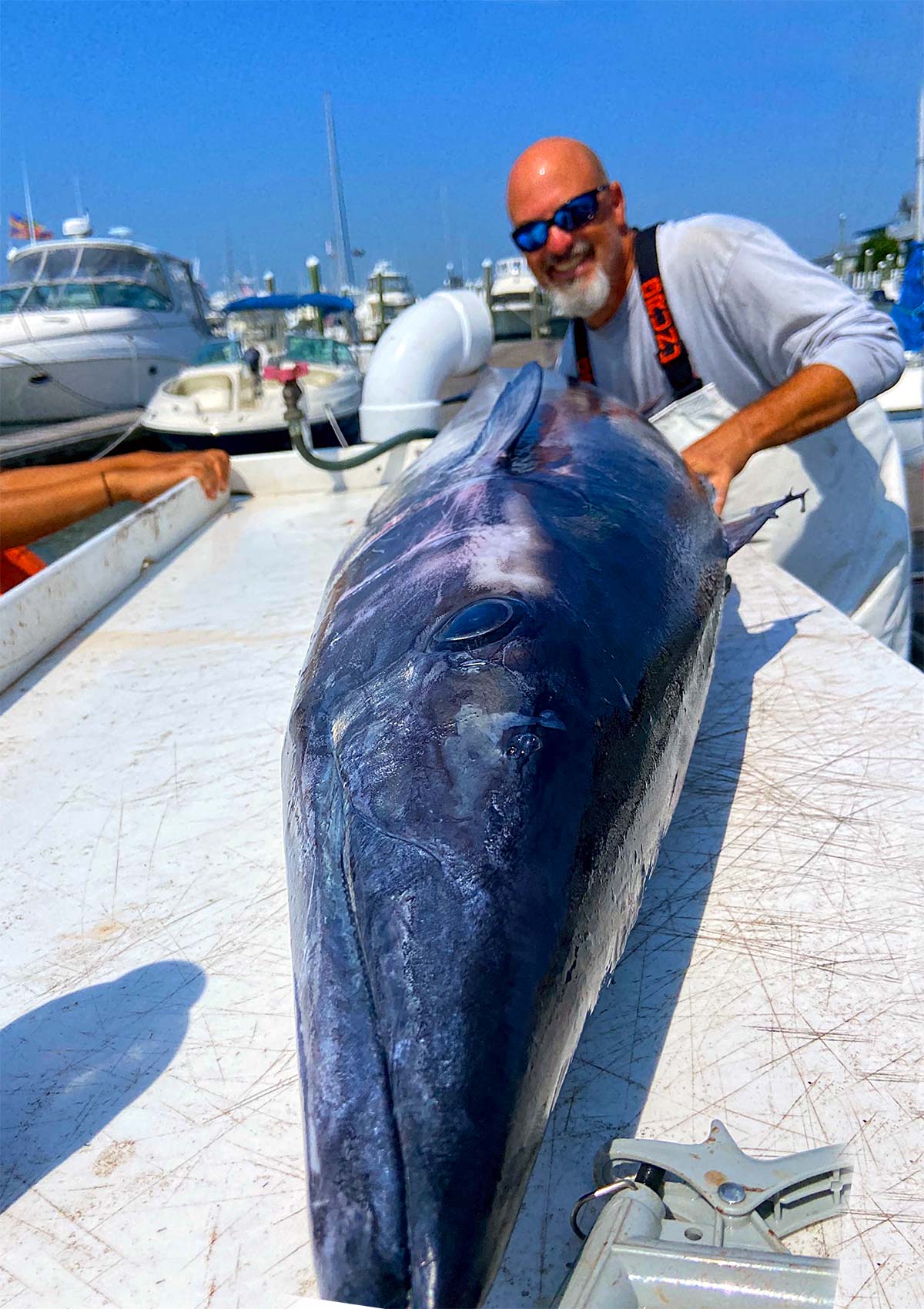
Once you begin targeting wahoo on our home turf, you may never slow down again!
I have a problem, and any 12-step program would tell me that admitting the problem is the first step. I am addicted to wahoo, there I said it. I crave that initial searing run, the kind that makes the line sizzle though the water.
I need to see that unmistakable torpedo shape. I will do just about anything for the feeling I get when I set the lures and push the throttles up to 12 knots. Finally, that euphoric sensation when I take a bite of perfectly grilled wahoo with mango salsa, ahhh bliss.
Yes, I am aware I have a problem, and many anglers along the Northeast and Mid-Atlantic may not know it yet, but they have the same problem! So read on at your own risk.
| SCAN FOR ‘HOOS |

There is a Facebook group called Jersey ‘Hoo Hunters where you can jump onboard and share your wahoo stories and pics with the other wahoo afflicted anglers throughout the region. Look for the author contributing regularly there on social media. |
Wahoo (Acanthocybium Solandri) is found worldwide in tropical and subtropical seas. While we call it wahoo in this region, in Hawaii it is known as Ono and in Central America it’s called Peto. The wahoo is never misidentified; the long torpedo shape, electric blue back, chrome belly, and not to mention those unmistakable black bars along its flanks! Its torpedo shape and forked tail makes the wahoo one of the fastest sprinters in the ocean, being clocked at speeds up to 60 miles per hour! No wonder 12 knots is not too fast!
No matter where you catch the wahoo, all anglers agree it is a delicacy! Its white steaks are great grilled, or as fish tacos. Besides speed, the ‘hoo has a second weapon, its jaws. The jaws and teeth of a wahoo are a force to respect. The teeth are razor sharp on all sides, and the way that the top and bottom jaw are arranged, they are like a pair of surgically sharp scissors. Care should be taken whenever handling a wahoo on deck. Most anglers including myself keep a Billy club handy, a few hits to the head really “calms” the fish down and makes things safer for all.
While most of the wahoo we catch in this region are 40 to 70 pounds, the world record is 187 pounds. While back at home in New Jersey where I spend a lot of my time hunting ‘hoos, the state record is a whopping 123 pounds, 12 ounces. My personal best is 90 pounds, so bigger varieties are around.
Intrigued yet?
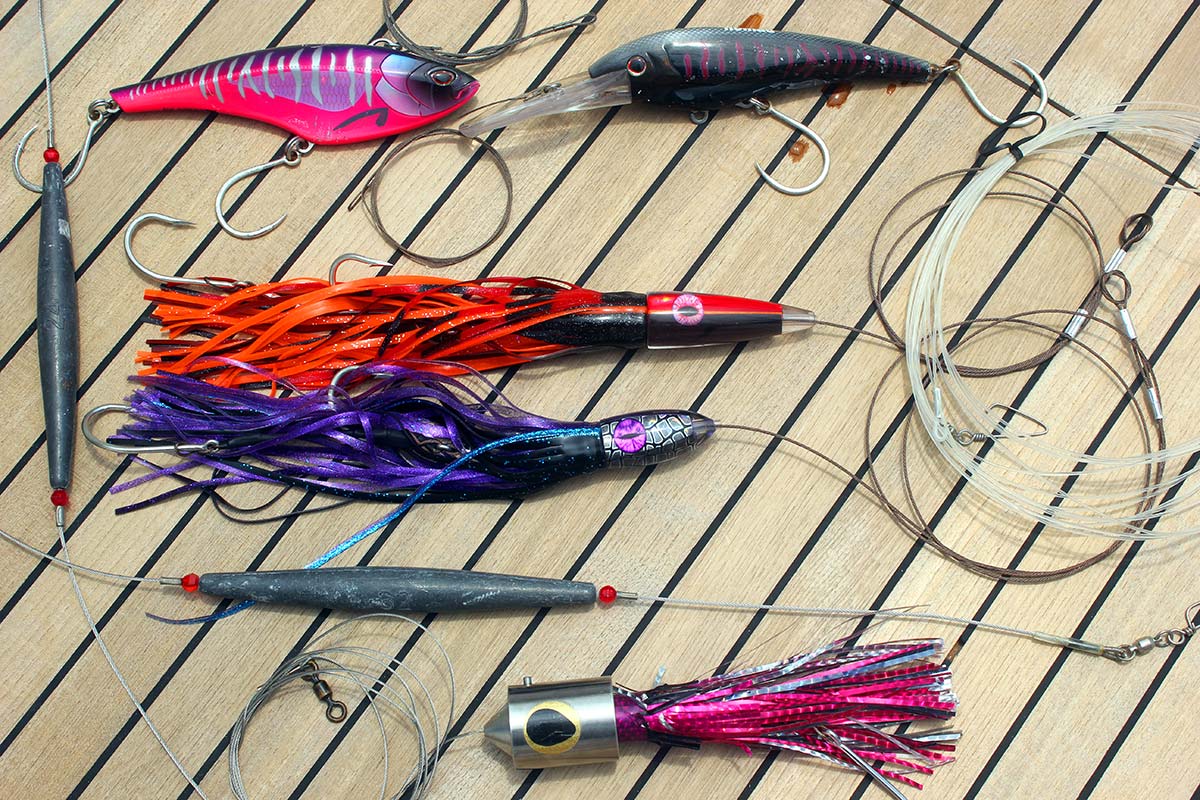
Fast & Furious Fish
I have spent the last 7 years perfecting my high-speed trolling techniques for the Northeast and have been successful more than not. So here is how we do it – we run a three-rod spread for wahoo, any more than that and it could get ugly with tangles and rod clearing. Rods are fished out of the left and right stern corner rod holders and one down the middle. As a caution, you may need to reinforce those rod holders under the gunnels with a backing plate. Twelve knots create a lot of pressure on a gunnel mounted rod holder.
Reel wise, we use 50 class reels coupled with bent butt 50 class rods. If you don’t have bent butts, no worries; I started out with straight butts as well, however, the straight butts do have a ton more pressure on them due to the angle of pull vs. a bent butt. Whatever style of rod you use, lever drags reels are key. Once at speed (12 to 14 knots) push the lever drags as far forward as needed, even past strike if needed to prevent the line from creeping out while trolling. The lever can easily be returned to the strike position after a fish is on. Pushing past strike can easily increase the drag upwards of 25 pounds! Just keep in mind that this high of a drag setting places so much strain on the equipment, it must be of top quality and perfect working order.
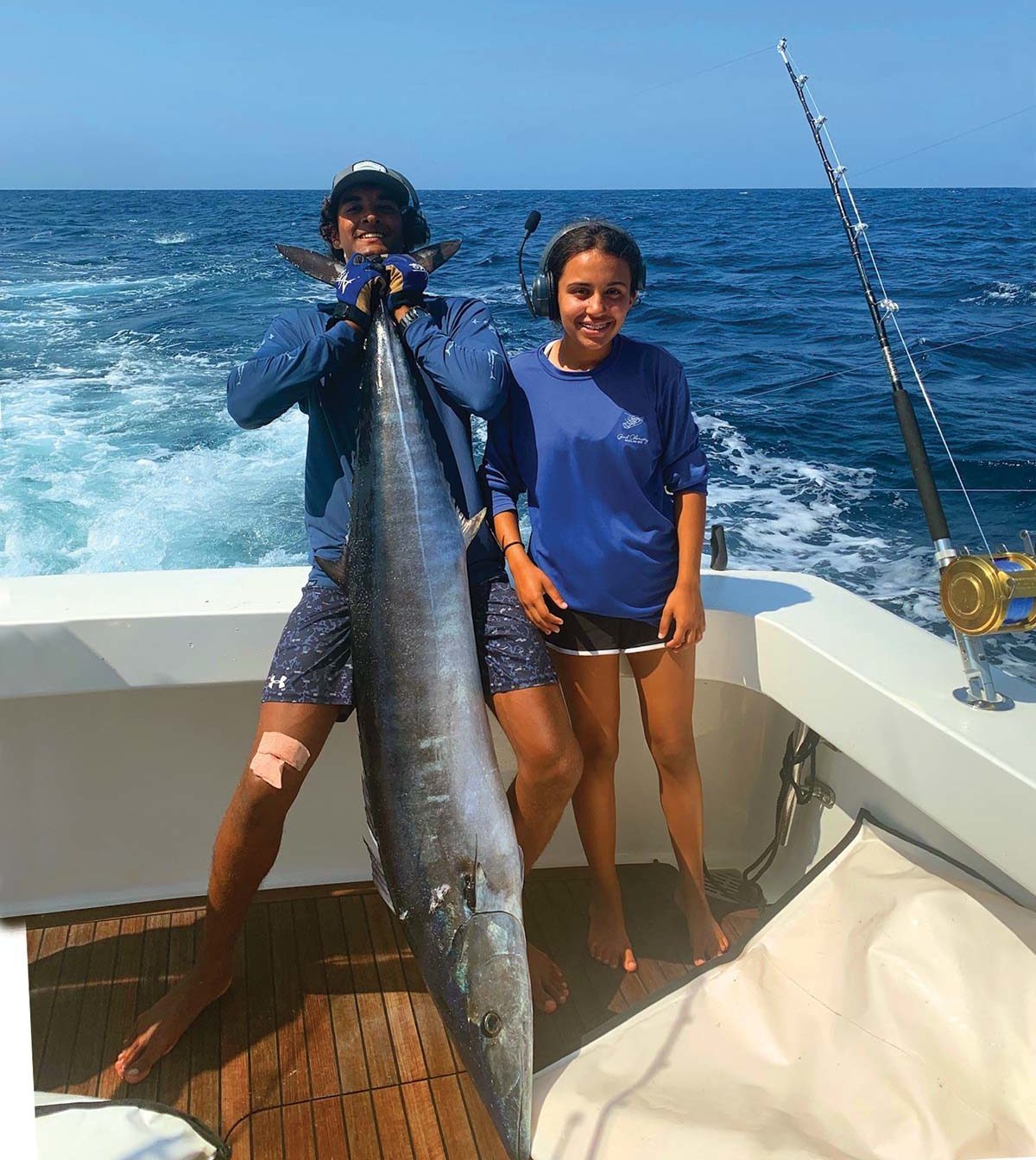
Speaking of strain on equipment, if you typically don’t use rod leashes it is time to do so now. All our rods get tethered to the nearest cleat just in case something gives way! We fish lures only at these speeds, no baits (at these speeds is near impossible to keep a ballyhoo from peeling like a banana), and we fish those lures way back. With our three-rod spread, one bullet type lure is placed 100 to 150 yards back, and the other at least 150 yards back. They are staggered to preserve turning ability without them tangling.
The middle rod is always a hard bait like a Nomad DTX 200 or 220 or a Nomad Madmac heavy. It is fished 60 yards back and with the lip of a DTX the bait is fishing almost 50 feet down. There are only a few hard baits that can be fished at this speed and the DTX is the best I have found. Once we are ready to deploy the spread, we bring our speed to 12 knots and set out.
Here is a tip; at 12 knots the engine noise may very well drown out the sound of a screaming clicker, so we always place a rubber band on the main line just ahead of the reel. The band acts like a strike indicator; let everyone on deck know, if the band is gone, fish on! It took a few spooled reels to come up with this one; trust me, just use it.
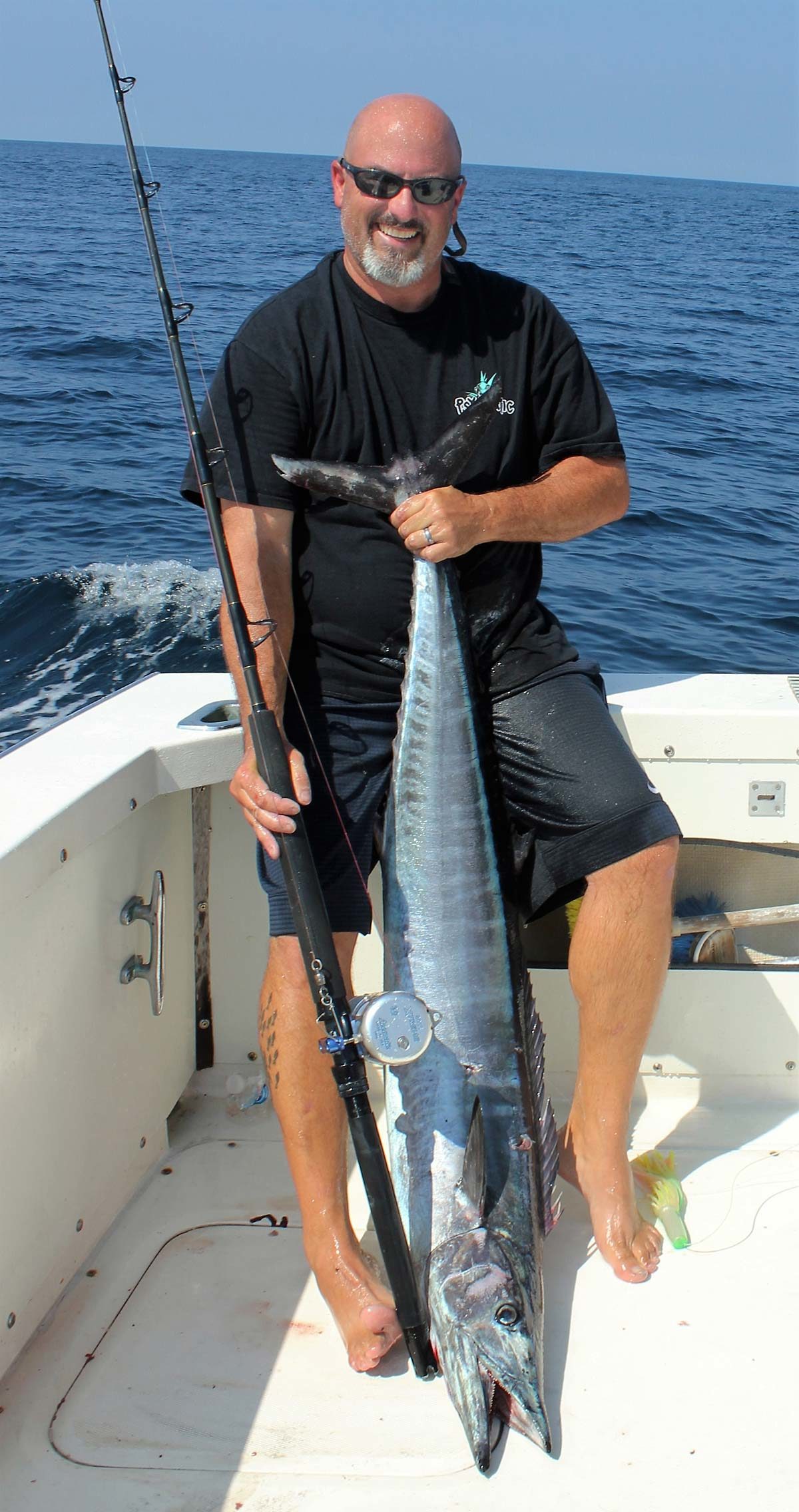
How, What & Where
By now you must be wondering how to keep lures under the water at 12 knots? Other than the DTX’s whose extended lips keeps it in the water, the answer is lead, and lots of it. Most days a 28-ounce trolling drail will work well but have had to go to 48 ounces depending on conditions. Tournament Cable makes great wahoo trolling weights with cable on both ends. Cable rigged drails are a must. Many times, wahoo will strike the trolling lead, and if they are not rigged with cable, it’s bye bye to the entire rig. On the drail, each loop should be chaff guarded, and have a high quality, oversized ball bearing snap swivel at one end and barrel swivel on the other.
With all this weight, all this speed and all this tension, it also stands to reason that a shock leader should be part of this rigging system. A 10 foot long, 250-pound test shock leader is standard for us. We rig it with a chaff guarded loop on one end and a quality 230-pound ball bearing snap swivel on the other. The loop end of the shock leader is connected to the trolling weight’s swivel, and the shock leader swivel is connected to the barrel swivel at the lure end. Total length of the rigging should be manageable at boat side, from 12 to 15 feet long.
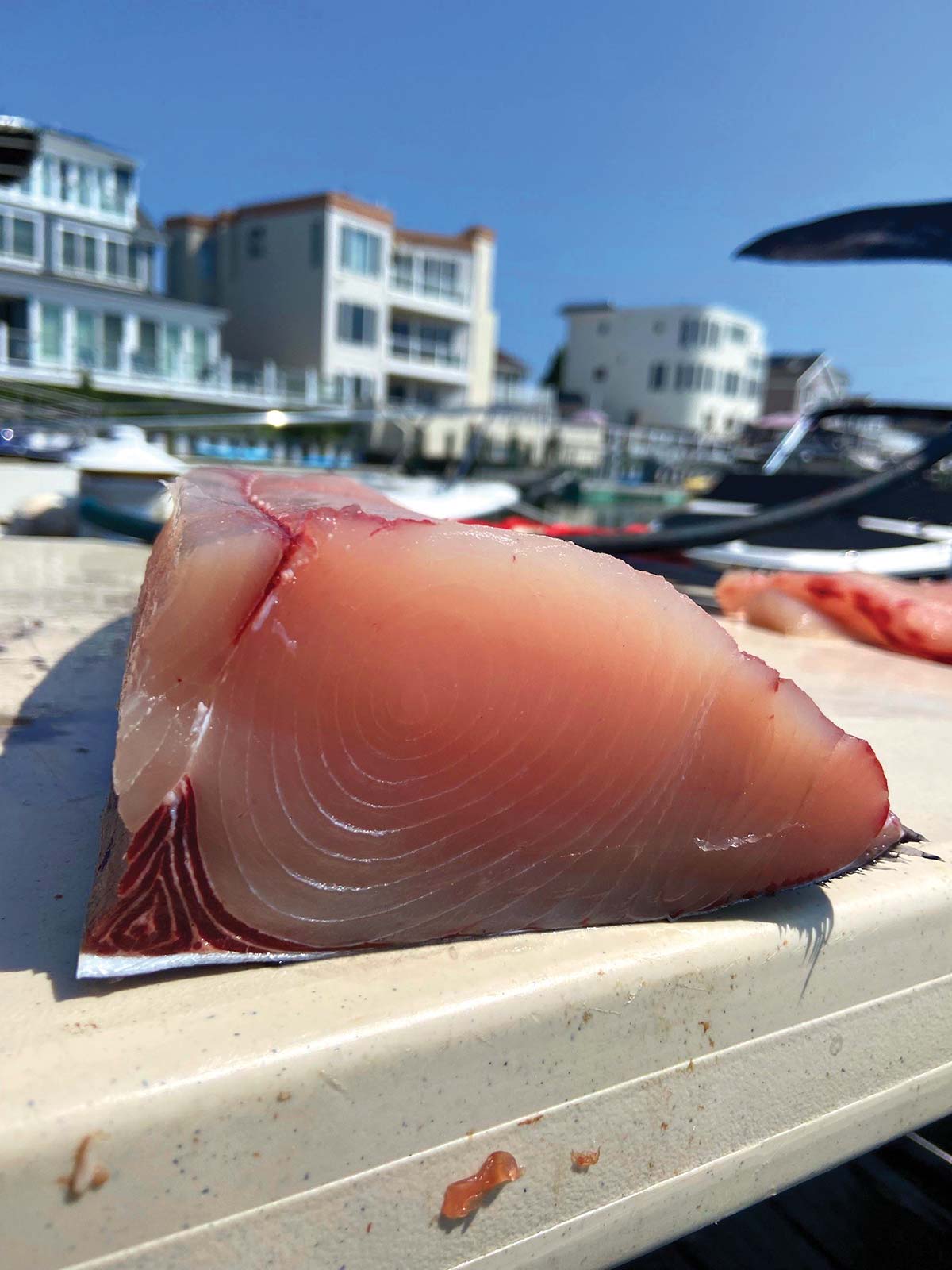
Lure selection is last on the list. There are a host of manufacturers that are pumping out wahoo lures, but check out some locals like TNT Tackle, they have some great head shapes and in all the right colors. I have also taken fish on ballyhood cowbell lures and heavy headed bullet type lures. While black and purple are favorite colors, red and black have produced, as has orange. Don’t let the size scare you, big is ok here, most of our wahoo lures are at least 15 inches up to 18 inches in length.
Some wahoo lures will come rigged, but I have found that certain rigging works better than others, and so I rig all our wahoo lures the same way. It starts with 400-pound, 49-strand cable. With 3 feet of cable ahead of the lure’s head, crimping a loop with a ball bearing barrel swivel. As for the hooks, we crimp a double stiff rig, two 9/0 Mustad hooks in line with each other, placing the trailing hook just beyond the end of the skirt. It is very important to know that our hook up ratio is best when the hooks are allowed to ride point facing up in the lure. Electrical tape or hook keepers can aid in locking the hooks riding upward.
Okay, the last question is where? Where does one begin trolling for wahoo? Traditionally, areas like the “tails” and the flats before canyons will hold fish. Inshore areas off the Jersey Shore for example like the Fingers, AP and Monster Ledge can hold as well; in fact the Garden State record came from the area of the 28 Mile Wreck. But the answer is really quite vast; anywhere in the Northeast between the 20 fathom and 40 fathom line. Look for areas with lumps, holes, wrecks or fingers as any of these will hold them. What is convenient of course is that many of the areas that hold bluefin or yellowfin will also hold wahoo.
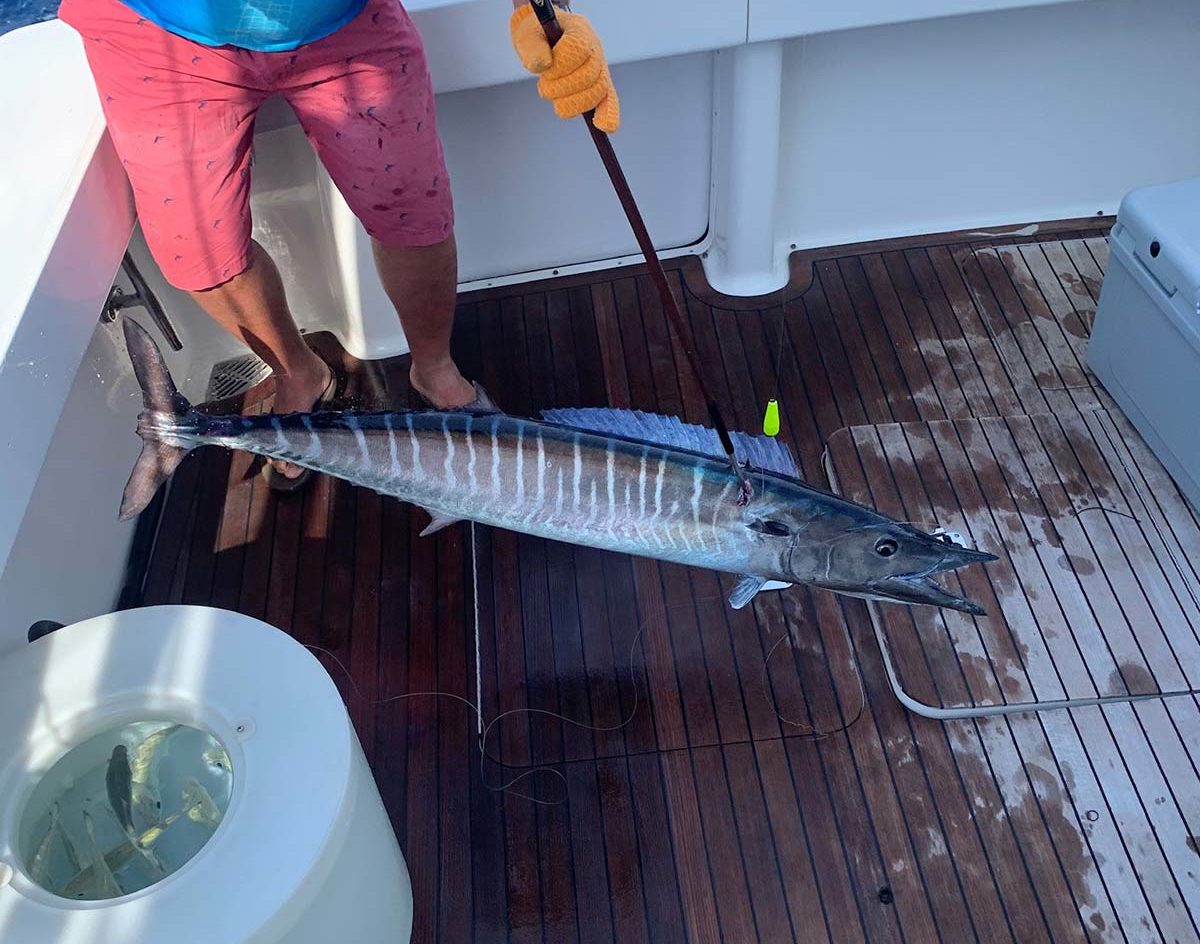
Also quite convenient is that you can drop in your ‘hoo spread when you’re moving spots, searching for bait or tuna, and this is my favorite, when you can’t do more than 12 knots anyway due to conditions! The bottom line is, look for wahoo wherever you look for other pelagics, they usually are all together.
One last tip, weed lines and large floating debris don’t just hold mahi, they usually hold ‘hoos deeper in the column and high-speed trolling past can produce great results.
We never leave the dock targeting wahoo specifically. But when the tuna bite dies, out goes the wahoo spread. In fact, we rarely go a day offshore without dedicating some time to targeting those hi speed ‘hoos, and you should too!

